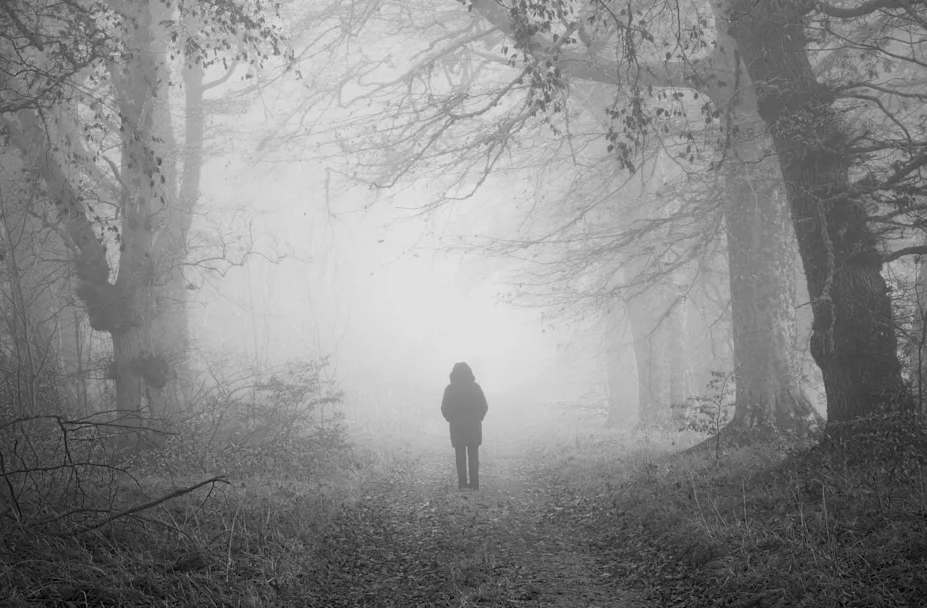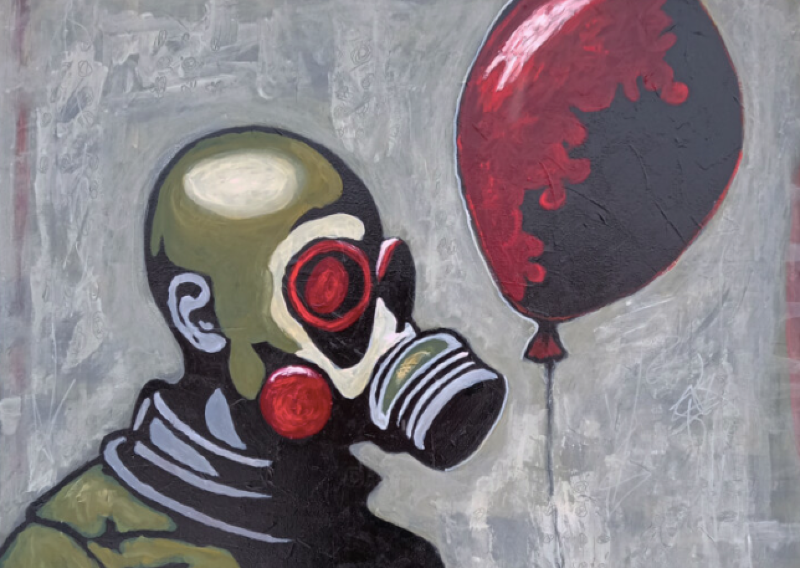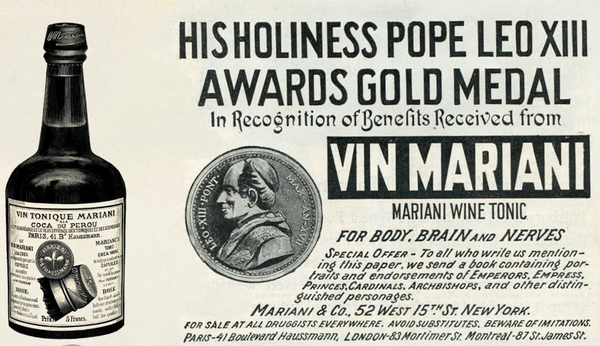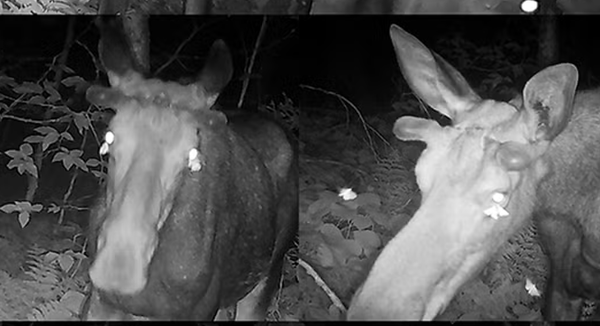People keep disappearing in Vermont's 'Bennington Triangle'

From Mental Floss: "Louis Knapp saw the girl in the red parka and decided to stop. It was roughly 3 p.m. on Sunday, December 1, 1946, and Knapp was driving along Route 67A in Bennington, Vermont. He asked the girl where she was going. To hike the Long Trail, she said, a reference to a path that climbed five miles up Glastenbury Mountain. She didn’t seem dressed for it, though. Knapp figured she was a student at Bennington College, which was right near where he had stopped. The two said little as Knapp neared his driveway on Route 9. Down the road roughly two miles was the entrance to the Long Trail. A few minutes later, Knapp’s daughter went outside, and there was no sign of the hitchhiker. The girl’s name was Paula Welden, and her fate would lend credence to the belief that the Long Trail seemed to harbor one story after another of people who simply vanished. So many, in fact, that it is called the Bennington Triangle."
The mystery behind a Banksy painting that went missing from The Met is finally solved

From the Art Newspaper: "Banksy has been making mischief for years, including hitting the US headlines in 2005 when he illicitly hung a work at the Metropolitan Museum of Art. John Barelli, the former head of the Met’s security department, said three accomplices helped the street artist to carry out the stunt. Two of them began arguing, distracting the guards, allowing the third, who wore a fake beard and a tweed hat, to covertly affix a painting to the wall. The intruder then placed a placard next to the painting: “Banksy, 1975. ‘Last breath.’ Oil on board. Donated by the artist.” Banksy apparently tried to reclaim his property. “About a month later, I got a call from our legal department, telling me that he wants it back,” Barelli said. “And I said, ‘Well, he can’t have it back. We threw it out.’” So where is the piece now? Barelli admits that when he retired, he took the work himself. “If I need some money, maybe I’ll do something with it.”
The radio stunt that ended in a death sentence

From Now I Know: "In the fall of 1964, Esther Castellani got some bad news: her husband of nearly two decades, Rene, was cheating on her. The entire ordeal made Esther sick to her stomach — literally. She started suffering from severe abdominal pains, and later, other symptoms emerged. Esther could only stomach one food item: a vanilla milkshake from a local place called White Spot. But for about a week that summer, the milkshakes stopped coming. Rene was a radio host at CKNW and a local car dealership called BowMac wanted him for a stunt. BowMac had a neon sign above the dealship, above which they placed a station wagon. They paid CKNW and Rene Castellani to live in that station wagon until every single car on their lot sold, and Castellani agreed. The stunt worked — eight days in, all the cars sold. Castellani returned to his daily routine of bringing his ailing wife a milkshake. That routine ended on July 11. That day, Esther Castellani passed away, the still unknown illness to blame."
Hi everyone! Mathew Ingram here. I am able to continue writing this newsletter in part because of your financial help and support, which you can do either through my Patreon or by upgrading your subscription to a monthly contribution. I enjoy gathering all of these links and sharing them with you, but it does take time, and your support makes it possible for me to do that. I also write a weekly newsletter of technology analysis called The Torment Nexus.
Why is Australia shooting hundreds of koalas out of trees with helicopters?

From Vox: "The koala is a national icon of Australia. And in some parts of the country, these marsupials — known for their fluffy ears, adorable clingy babies, and diet of eucalyptus leaves — are endangered. In the last two decades, their population size in some areas has dropped by half. It may seem odd, then, that the government is shooting them out of trees. From helicopters. In a national park. Earlier this month, government authorities shot and likely killed several hundred koalas from helicopters in Budj Bim National Park, a protected area in the southern state of Victoria. In March, a massive bushfire burned more than 5,400 acres in the park, injuring some of the koalas and destroying a large amount of eucalyptus leaves, their food. The government says the controversial program is intended to end the koalas’ suffering from burns and starvation. But some koala advocates say there’s more to the story."
How a tiny Pacific Island became the global capital of cybercrime

From MIT: "Tokelau, a necklace of three isolated atolls strung out across the Pacific, is so remote that it was the last place on Earth to be connected to the telephone—only in 1997. Just three years later, the islands received a fax with an unlikely business proposal that would change everything. It was from an early internet entrepreneur from Amsterdam, named Joost Zuurbier. He wanted to manage Tokelau’s country-code top-level domain, or ccTLD—the short string of characters that is tacked onto the end of a URL. In the succeeding years, tiny Tokelau became an unlikely internet giant—but not in the way it may have hoped. Until recently, its .tk domain had more users than any other country’s: 25 million. But there has been and still is only one website actually from Tokelau that is registered: the page for Teletok. Nearly all the others that have used .tk have been spammers, phishers, and cybercriminals."
What if you could ride a real air bike like the ones from Star Wars?
The Volonaut Airbike takes flight
— Science girl (@gunsnrosesgirl3) April 29, 2025
pic.twitter.com/kld0JUuJ3q
Acknowledgements: I find a lot of these links myself, but I also get some from other newsletters that I rely on as "serendipity engines," such as The Morning News from Rosecrans Baldwin and Andrew Womack, Jodi Ettenberg's Curious About Everything, Dan Lewis's Now I Know, Robert Cottrell and Caroline Crampton's The Browser, Clive Thompson's Linkfest, Noah Brier and Colin Nagy's Why Is This Interesting, Maria Popova's The Marginalian, Sheehan Quirke AKA The Cultural Tutor, the Smithsonian magazine, and JSTOR Daily. If you come across something interesting that you think should be included here, please feel free to email me at mathew @ mathewingram dot com



